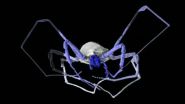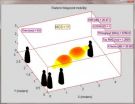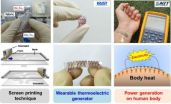(Press-News.org) New Haven, Conn.— A Yale-led research team has developed a new approach to species conservation that prioritizes genetic and geographic rarity and applied it to all 9,993 known bird species.
"To date, conservation has emphasized the number of species, treating all species as equal," said Walter Jetz, the Yale evolutionary biologist who is lead author of a paper published April 10 in Current Biology. "But not all species are equal in their genetic or geographic rarity. We provide a framework for how such species information could be used for prioritizing conservation."
Worldwide, nearly 600 species of birds are currently in danger of becoming extinct as the result of human development pressures and environmental changes. Conserving genetically distinct and threatened species is especially challenging, Jetz said, because many of these are far from species-rich areas that are already being protected
Jetz and his team confront this problem by applying a criterion called evolutionary distinctiveness, a quantitative measure of genetic or evolutionary uniqueness. This metric helps conservationists prioritize which birds most deserve attention.
Birds that evolved earlier in history or that do not have close living relatives — such as the Oilbird, which has almost 80 million years of evolutionary history unique to it — have a high evolutionary distinctiveness. Birds that have evolved more recently or have many common relatives have a low evolutionary distinctiveness.
The researchers mapped the geographic ranges of all 9,993 species of living birds and applied evolutionary distinctiveness ratings to them. The results revealed areas where maximum conservation of bird diversity can be achieved with minimal investment, according to researchers. Among the targeted areas for future conservation are regions of Australia, Indonesia, Brazil, and Madagascar.
Conversationalists are already taking notice of the new approach.
The Zoological Society of London's (ZSL) EDGE of existence program focuses on conservation of evolutionarily unique species, such as those identified in the paper. The new quantitative methods for identifying unique species at risk have provided the EDGE of existence program a stronger framework for its fundraising and avian conservation efforts, according to Jetz and co-author Arne Mooers from Simon Fraser University, who have worked closely with ZSL for the last five years.
Mapping avian conservation has been an ongoing project for Jetz, who is leading The Map of Life Project (mol.org). The project integrates up-to-date information about species distributions and provides range maps for evolutionarily distinct species.
"In addition to targeted conservation, better monitoring of species' changing distributions is vital, and geographical conservation priorities can be effectively adjusted to better conserve the tree of life and the many important functions it provides," he said.
While Jetz's research group at Yale aims to expand this work to other vertebrates, he hopes that other scientists follow his lead to combine quantitative genetic and geographic information for maximally effective and minimally expensive conservation of the world's animals or plants.
"It is a reality that society is unwilling or unable to protect every single species into the future, so it would make sense to identify and potentially prioritize the most irreplaceable species over others," he said.
INFORMATION:
To explore the results go to http://www.mol.org/projects/ED or http://www.birdtree.org
Jetz is associate professor of ecology & evolutionary biology and associate professor at the Yale School of Forestry & Environmental Studies.
Other authors of this paper are Gavin H. Thomas, Sheffield University, U.K.; Jeffrey B. Joy & Arne O. Mooers, Simon Fraser University, Canada; David W. Redding, University College London, U.K.; and Klaas Hartmann, University of Tasmania, Australia.
The research was funded by the Natural Sciences and Engineering Research Council of Canada, the Natural Environmental Research Council, the National Science Foundation, and the National Aeronautics and Space Administration.
Some birds come first -- a new approach to species conservation
2014-04-10
ELSE PRESS RELEASES FROM THIS DATE:
Penn study finds mechanism that regulates lung function in disease Birt-Hogg-Dube syndrome
2014-04-10
(PHILADELPHIA) – Researchers at Penn Medicine have discovered that the tumor suppressor gene folliculin (FLCN) is essential to normal lung function in patients with the rare disease Birt-Hogg-Dube (BHD) syndrome, a genetic disorder that affects the lungs, skin and kidneys. Folliculin's absence or mutated state has a cascading effect that leads to deteriorated lung integrity and an impairment of lung function, as reported in their findings in the current issue of Cell Reports.
"We discovered that without normal FLCN the alveolar epithelial cells (AEC) in these patients' ...
Ancient 'spider' images reveal eye-opening secrets
2014-04-10
VIDEO:
This is a video showing the 305-million-year-old harvestman fossil.
Click here for more information.
Stunning images of a 305-million-year-old harvestman fossil reveal ancestors of the modern-day arachnids had two sets of eyes rather than one.
The researchers say their findings, published in the journal Current Biology, add significant detail to the evolutionary story of this diverse and highly successful group of arthropods, which are found on every continent except Antarctica.
University ...
Poor mimics can succeed as long as they mimic the right trait
2014-04-10
There are both perfect and imperfect mimics in nature. An imperfect mimic might have a different body shape, size or colour pattern arrangement compared to the species it mimics.
Researchers have long been puzzled by the way poor mimicry can still be effective in fooling predators not to attack. In the journal Current Biology, researchers from Stockholm University now present a novel solution to the question of imperfect mimicry.
Mimicry is when animals have the appearance of another species in order to avoid being attacked. For instance, hoverflies have a similar ...
Enzyme 'wrench' could be key to stronger, more effective antibiotics
2014-04-10
Builders and factory workers know that getting a job done right requires precision and specialized tools. The same is true when you're building antibiotic compounds at the molecular level. New findings from North Carolina State University may turn an enzyme that acts as a specialized "wrench" in antibiotic assembly into a set of wrenches that will allow for greater customization. By modifying this enzyme, scientists hope to be able to design and synthesize stronger, more adaptable antibiotics from less expensive, natural compounds.
Kirromycin is a commonly known antibiotic ...
NEJM: High-risk seniors surgery decisions should be patient-centered, & physician led
2014-04-10
Surgery for frail, senior citizen patients can be risky. A new patient-centered, team-based approach to deciding whether these high-risk patients will benefit from surgery is championed in an April 10 Perspective of the New England Journal of Medicine. The Perspective suggests that the decision to have surgery must balance the advantages and disadvantages of surgical and non-surgical treatment as well as the patient's values and goals in a team-based setting that includes the patient, his or her family, the surgeon, the primary care physician and the physician anesthesiologist.
One ...
Virus structure inspires novel understanding of onion-like carbon nanoparticles
2014-04-10
Symmetry is ubiquitous in the natural world. It occurs in gemstones and snowflakes and even in biology, an area typically associated with complexity and diversity. There are striking examples: the shapes of virus particles, such as those causing the common cold, are highly symmetrical and look like tiny footballs.
A research programme led by Reidun Twarock at the University of York, UK has developed new mathematical tools to better understand the implications of this high degree of symmetry in these systems. The group pioneered a mathematical theory that reveals unprecedented ...
New towns going up in developing nations pose major risk to the poor
2014-04-10
DENVER (April 10, 2014) – Satellite city projects across the developing world are putting an increasing number of poor people at risk to natural hazards and climate change, according to a new study from the University of Colorado Denver.
Throughout Asia, Africa and Latin America `new towns' are rapidly being built on the outskirts of major cities with the goal of relieving population pressures, according to study author Andrew Rumbach, PhD, assistant professor of planning and design at CU Denver's College of Architecture and Planning.
The towns often sit in high flood ...
Four-eyed daddy longlegs fossil fills in evolutionary tree
2014-04-10
Living harvestmen—a group of arachnids more commonly known as daddy longlegs—have a single pair of eyes that help them navigate habitats in every continent except Antarctica. But a newly described 305-million-year-old fossil found in eastern France shows that wasn't always the case. New research recently published in the journal Current Biology and led by scientists at the American Museum of Natural History and the University of Manchester indicates that primitive harvestmen had two pairs of eyes, adding significant details to the evolutionary story of this diverse and ...
New research on gigabit wireless communications
2014-04-10
Research on gigabit wireless communications has been presented by researchers from the University of Bristol at the world's leading wireless communications and networking conference, IEEE WCNC 2014, in Turkey earlier this week [Monday 6 to Wednesday 9 April].
The two research papers, led by Andrew Nix, Professor of Wireless Communication Systems and Dr Simon Armour, Senior Lecturer in Software Radio, from the University's Communication Systems and Networks research group in the Department of Electrical and Electronic Engineering, could have significant implications for ...
Thermoelectric generator on glass fabric for wearable electronic devices
2014-04-10
Wearable computers or devices have been hailed as the next generation of mobile electronic gadgets, from smart watches to smart glasses to smart pacemakers. For electronics to be worn by a user, they must be light, flexible, and equipped with a power source, which could be a portable, long-lasting battery or no battery at all but a generator. How to supply power in a stable and reliable manner is one of the most critical issues to commercialize wearable devices.
A team of KAIST researchers headed by Byung Jin Cho, a professor of electrical engineering, proposed a solution ...




